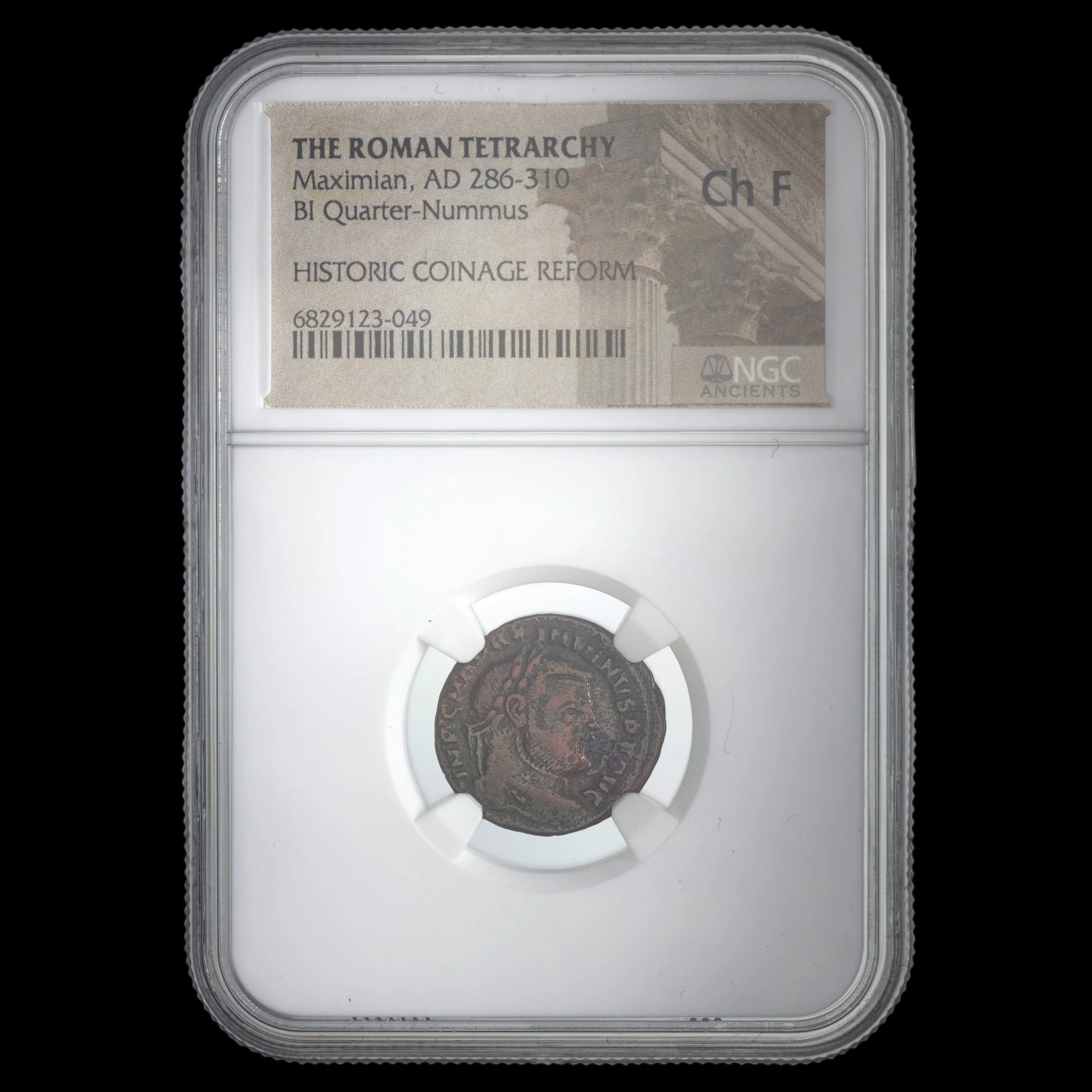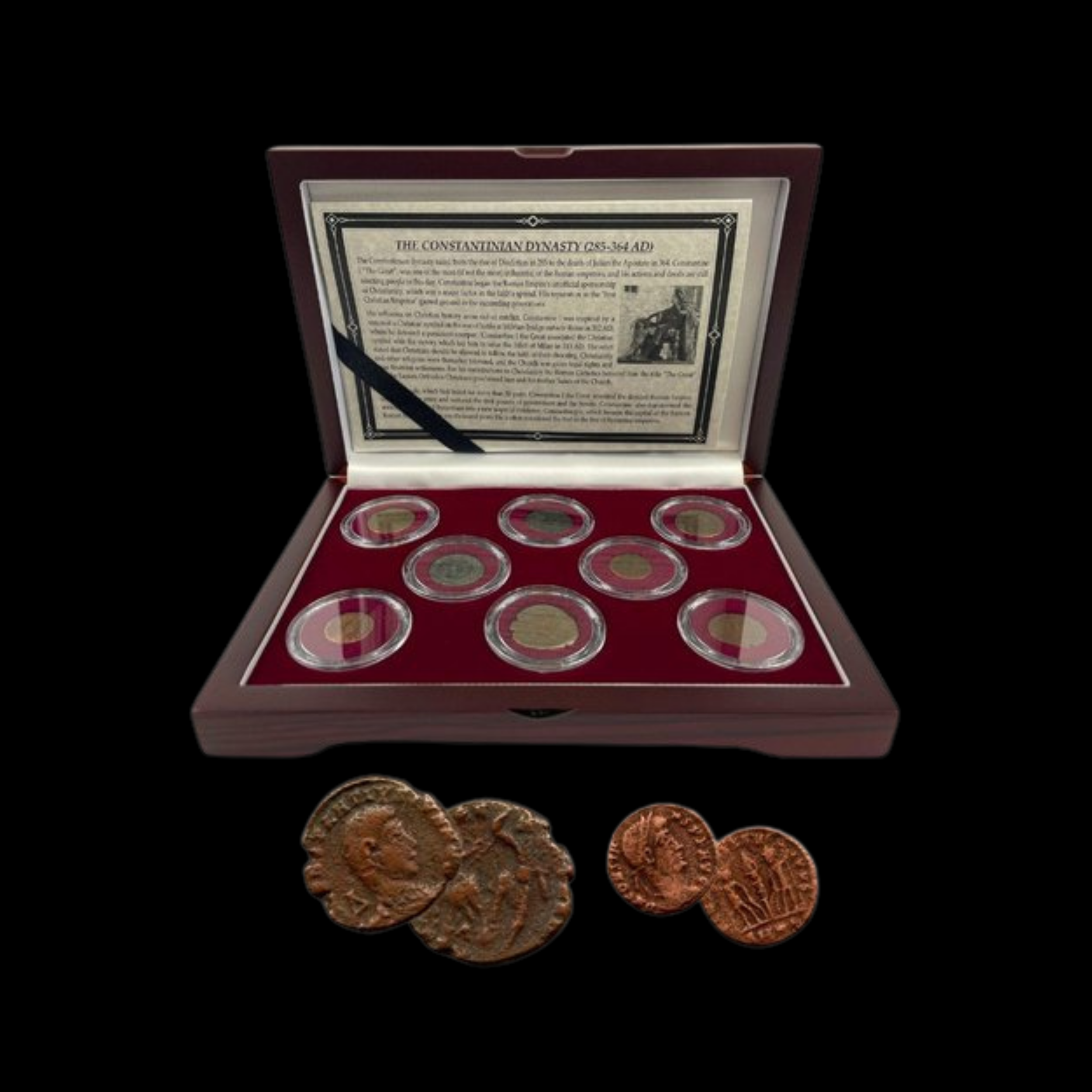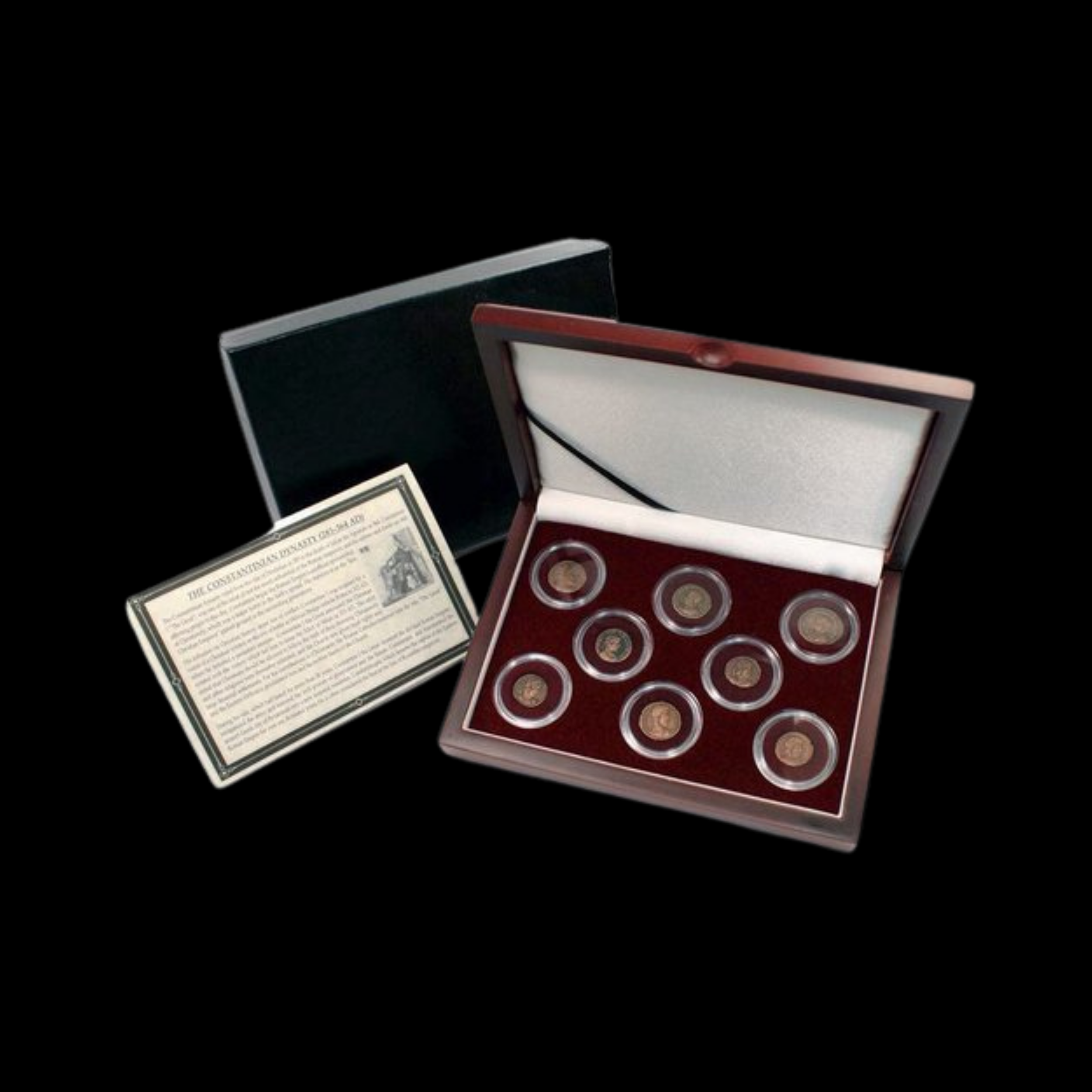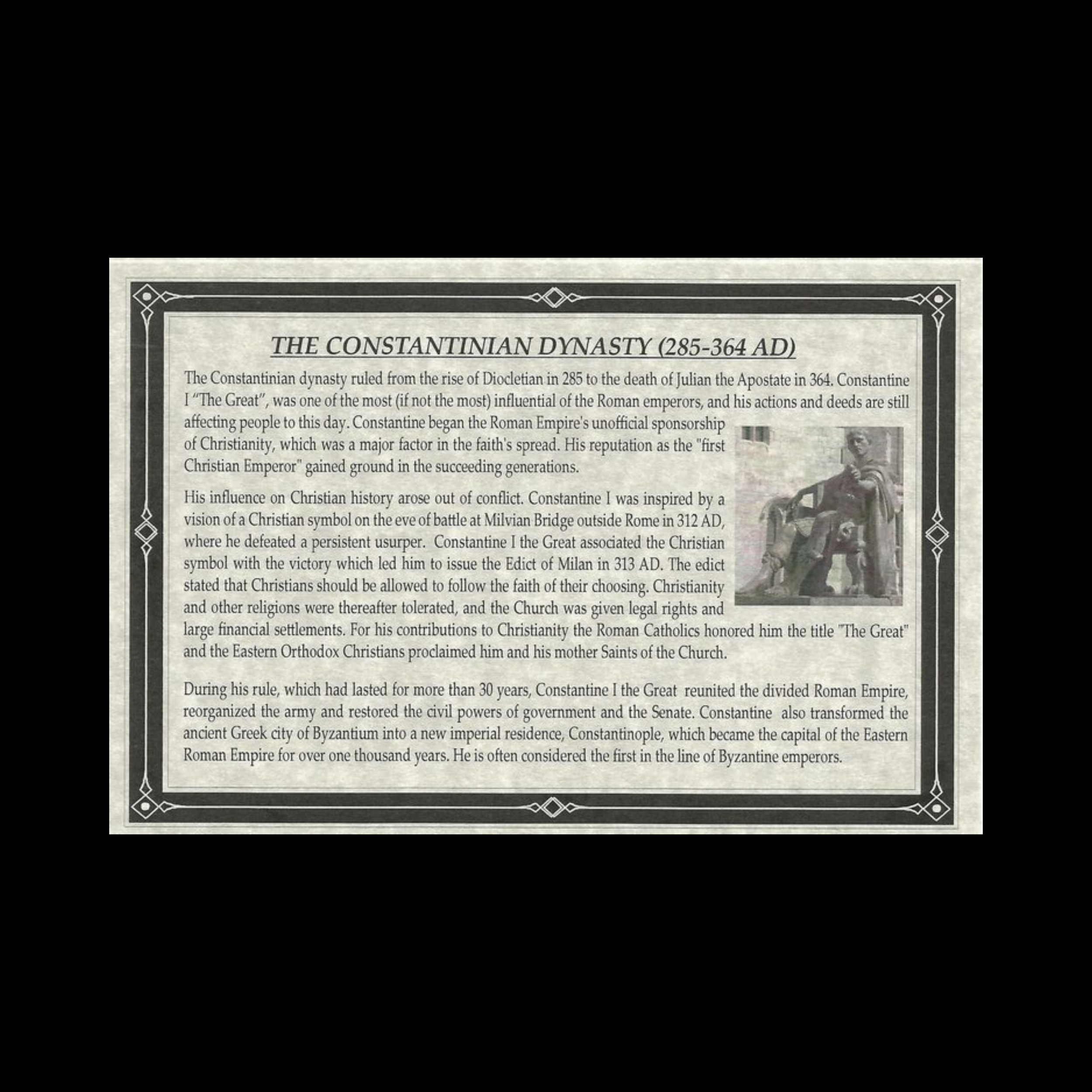 Image 1 of 4
Image 1 of 4

 Image 2 of 4
Image 2 of 4

 Image 3 of 4
Image 3 of 4

 Image 4 of 4
Image 4 of 4





Roman Bronze Coin – ‘Urbs Roma’ Commemorative (about 1,690 years old) – Honoring the City of Rome – NGC Certified
The coins shown are representative examples of the grade and type, but not the actual specimens for sale. For details on NGC’s grading standards and definitions, please refer to our NGC Grading page.
This bronze commemorative coin known as an "Urbs Roma" (City of Rome) issue was created to celebrate Rome's legendary founding and continued significance even as the empire's power center shifted eastward. Minted in the early to mid-4th century CE during the Constantinian era, this coin represents imperial propaganda linking the new Christian empire to Rome's ancient mythology and traditions.
Coin Description:
Front side: Personification of the city of Rome as a helmeted goddess, shown in profile and wearing military attire, with the inscription "URBS ROMA" (City of Rome) around the edge
Back side: The she-wolf of Roman legend nursing the twins Romulus and Remus, often with stars above representing divine favor, and possibly mint marks below
Technical Details:
Bronze alloy composition
Small bronze denomination (likely AE3 or AE4 in modern collector terminology)
RIC (Roman Imperial Coinage) reference number not visible in description
NGC (Numismatic Guaranty Corporation) certified
Minted approximately 330-346 CE
Fine condition (showing wear from circulation but with main design elements clearly visible)
Historical Significance:
This commemorative coin was part of a series issued after Emperor Constantine established a new eastern capital at Constantinople (modern Istanbul, Turkey). The coins celebrating Rome's mythical origins served as propaganda to reassure citizens that despite the empire's changing power structure, Rome's traditions remained honored. The reverse depicts the foundational Roman legend of twin brothers Romulus and Remus, who according to myth were abandoned as infants, nurtured by a she-wolf, and later grew up to found the city of Rome. These coins circulated during a transformative period when the Roman Empire was becoming increasingly Christianized yet still maintaining connections to its pagan past. The small bronze coins were used for everyday transactions by ordinary citizens across the empire from Britain to Egypt during a time when imperial authority was becoming more ceremonial and divine in nature.
The coins shown are representative examples of the grade and type, but not the actual specimens for sale. For details on NGC’s grading standards and definitions, please refer to our NGC Grading page.
This bronze commemorative coin known as an "Urbs Roma" (City of Rome) issue was created to celebrate Rome's legendary founding and continued significance even as the empire's power center shifted eastward. Minted in the early to mid-4th century CE during the Constantinian era, this coin represents imperial propaganda linking the new Christian empire to Rome's ancient mythology and traditions.
Coin Description:
Front side: Personification of the city of Rome as a helmeted goddess, shown in profile and wearing military attire, with the inscription "URBS ROMA" (City of Rome) around the edge
Back side: The she-wolf of Roman legend nursing the twins Romulus and Remus, often with stars above representing divine favor, and possibly mint marks below
Technical Details:
Bronze alloy composition
Small bronze denomination (likely AE3 or AE4 in modern collector terminology)
RIC (Roman Imperial Coinage) reference number not visible in description
NGC (Numismatic Guaranty Corporation) certified
Minted approximately 330-346 CE
Fine condition (showing wear from circulation but with main design elements clearly visible)
Historical Significance:
This commemorative coin was part of a series issued after Emperor Constantine established a new eastern capital at Constantinople (modern Istanbul, Turkey). The coins celebrating Rome's mythical origins served as propaganda to reassure citizens that despite the empire's changing power structure, Rome's traditions remained honored. The reverse depicts the foundational Roman legend of twin brothers Romulus and Remus, who according to myth were abandoned as infants, nurtured by a she-wolf, and later grew up to found the city of Rome. These coins circulated during a transformative period when the Roman Empire was becoming increasingly Christianized yet still maintaining connections to its pagan past. The small bronze coins were used for everyday transactions by ordinary citizens across the empire from Britain to Egypt during a time when imperial authority was becoming more ceremonial and divine in nature.




























